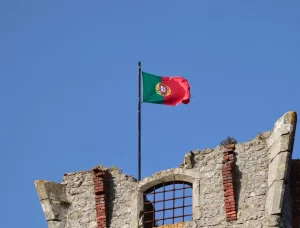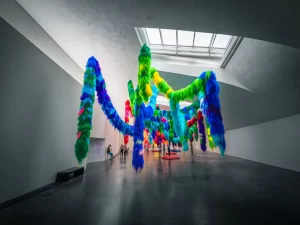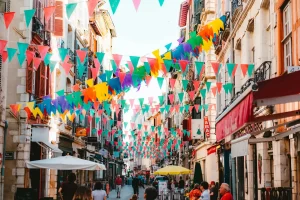The Resurgence of Portuguese Folk Music and Dance
Introduction
Portuguese folk music and dance, deeply rooted in the country’s cultural tapestry, have experienced a captivating resurgence in recent years. This article takes you on a journey through the rich history of these traditions, exploring regional styles, understanding the factors fueling their revival, and addressing both challenges and opportunities in this cultural resurgence.
Exploring Regional Traditions
Fado
Fado, originating in Lisbon, is characterized by mournful vocals and poignant lyrics. It reflects the soul of the city, often portraying themes of longing and saudade. Fado singers, accompanied by the Portuguese guitar, convey deep emotions, making it an emblematic expression of Portuguese folk music.
Cante Alentejano
Hailing from the Alentejo region, Cante Alentejano involves polyphonic choral singing with deep, haunting harmonies. Often performed by groups of singers, it creates a powerful and communal musical experience. The use of traditional instruments like the guitarra and acordeão enhances the authenticity of this folk tradition.
Rancho Folclórico
Rancho folclórico is a vibrant tradition involving traditional dance ensembles adorned in colorful costumes. These ensembles perform regional dances, preserving local dance forms and showcasing the diversity of Portuguese culture. The sound of accordions, bagpipes, and drums accompanies the lively choreography.
Bailinho da Madeira
Originating from Madeira, Bailinho da Madeira is a lively traditional dance characterized by quick steps and lively music. Dancers, often in festive attire, move energetically to the rhythm of instruments like the brinquinho and rajão. The dance is a celebration of Madeiran cultural identity.
Corridinho
Corridinho is a vibrant and energetic traditional dance from the Algarve, known for its lively tempo and distinctive choreography. It is characterized by pairs of dancers forming a rotating circle, with women stationed inside and men on the outside. As the music, often played on an accordion, intensifies, the dancers’ steps become more vigorous, creating a dynamic rhythm that mirrors the communal spirit of Portuguese celebrations.
Factors Contributing to the Revival
Cultural Revitalization Efforts
Government support, festivals, workshops, and educational programs have played a pivotal role in revitalizing Portuguese folk music and dance. These initiatives have created platforms for artists and enthusiasts to come together, ensuring the traditions continue to thrive.
Increased Interest in Heritage
A growing appreciation for heritage and authenticity has fueled interest in traditional cultural expressions. Audiences are seeking genuine connections to the past, making Portuguese folk music and dance increasingly relevant and attractive.
Contemporary Adaptations
Contemporary adaptations have introduced folk elements into modern music and dance genres. This fusion not only attracts a younger audience but also brings traditional forms to the forefront of the cultural scene, ensuring their continued relevance.
Technology and Social Media
The use of technology and social media has been instrumental in promoting and sharing Portuguese folk traditions. Videos, recordings, and live streams enable artists to reach wider audiences, both within Portugal and among the diaspora.
Diaspora Communities
Portuguese communities abroad play a crucial role in maintaining and sharing folk traditions. The diaspora actively participates in events, preserves cultural identity, and contributes to the global awareness and appreciation of Portuguese folk music and dance.
Challenges and Opportunities
Ongoing Challenges
Competition from Contemporary Music
Traditional folk music faces competition from contemporary genres. Attracting younger generations to appreciate and actively participate in folk traditions is a challenge that requires innovative approaches to keep these forms alive.
Loss of Traditional Knowledge and Skills
The transmission of traditional knowledge and skills is at risk due to an aging population of practitioners. Preserving these skills is crucial to maintaining the authenticity of Portuguese folk music and dance.
Limited Funding and Support
Sustaining initiatives and ensuring accessibility to traditional folk events often face financial challenges. Limited funding can hinder the growth and outreach of programs aimed at preserving these cultural traditions.
Potential Opportunities
Collaborations with Contemporary Artists
Collaborations between traditional folk artists and contemporary musicians or dancers offer exciting possibilities. These partnerships create new interpretations, attract diverse audiences, and breathe fresh life into age-old traditions.
Educational Programs
Integrating folk music and dance into school curricula provides a foundation for the next generation to learn, appreciate, and actively engage with these traditions. Educational programs ensure that the cultural baton is passed to younger hands.
Digital Archiving and Documentation
Creating digital archives and documentation efforts contribute to the preservation of Portuguese folk traditions. This ensures that future generations have access to recordings, videos, and materials that showcase the richness of these cultural expressions.
International Exchange and Collaboration
International exchange programs and collaborations with other cultures offer a unique opportunity to share and enrich Portuguese folk traditions. The blending of diverse influences contributes to the evolving nature of these cultural expressions.
Conclusion
The resurgence of Portuguese folk music and dance is not merely a revival of bygone traditions but a celebration of cultural identity and pride. This movement, driven by cultural revitalization, contemporary adaptations, and community engagement, has breathed new life into age-old traditions. The impact is profound, reaching beyond cultural preservation to contribute to local communities, tourism, and the dynamic cultural landscape of Portugal. As these traditions continue to thrive, their vitality ensures a vibrant cultural legacy for generations to come.
Key Takeaways
- Portuguese folk music and dance have a diverse regional history, and their recent resurgence is fueled by cultural pride, revitalization efforts, and contemporary adaptations.
- Specific regional traditions, such as Fado, Cante Alentejano, Rancho folclórico, Bailinho da Madeira, and Corridinho, each have unique characteristics and instruments, contributing to the cultural richness of Portugal.
- The revival is driven by factors like cultural revitalization efforts, increased interest in heritage, contemporary adaptations, technology, and diaspora communities. Challenges include competition from contemporary music, loss of traditional knowledge, and limited funding. Opportunities lie in collaborations, education, digital archiving, and international exchange.
FAQs
Q: What are some examples of Portuguese folk music and dance?
Examples include Fado, Cante Alentejano, Rancho folclórico, Bailinho da Madeira, and Corridinho, each representing unique regional styles and traditions.
Q: What factors contribute to the revival of Portuguese folk music and dance?
The revival is fueled by cultural revitalization efforts, increased interest in heritage, contemporary adaptations, technology, and the active involvement of diaspora communities.
Q: How can traditional Portuguese crafts adapt to the modern era?
Opportunities for adaptation include utilizing e-commerce and online platforms, collaborating with designers, implementing educational programs, and receiving government support.
Q: How can individuals support traditional Portuguese crafts?
Individuals can support traditional crafts by purchasing handmade products, participating in educational programs, visiting craft workshops and museums, and advocating for government initiatives that promote cultural heritage.
Q: What are the challenges faced by Portuguese folk music and dance?
Challenges include competition from contemporary music, the loss of traditional knowledge and skills, and limited funding for sustaining initiatives. Growth opportunities include collaborations, education, digital archiving, and international exchange.
Q: What is the significance of the resurgence of Portuguese folk music and dance?
The resurgence is significant for preserving cultural heritage, fostering a sense of identity, contributing to local economies through tourism, and creating a dynamic cultural landscape in Portugal.



